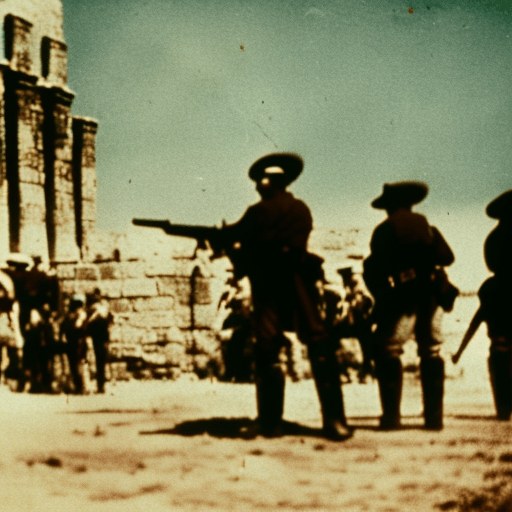Battle of the Alamo (1836)
The Battle of the Alamo was a pivotal event in the Texas Revolution that took place from February 23 to March 6, 1836, in San Antonio, Texas. It was a conflict between Mexican forces led by General Antonio López de Santa Anna and Texian rebels seeking independence from Mexico. The battle ended in a Mexican victory, but it became a symbol of heroic resistance and a rallying cry for Texian independence.
Background
In the early 1830s, tensions between the Texian settlers and the Mexican government were escalating. The Texians, primarily of American descent, were dissatisfied with the centralist policies of the Mexican government and sought greater autonomy. In 1835, the Texians revolted against Mexican rule, leading to the Texas Revolution.
The Siege
In December 1835, Texian rebels captured the Alamo, an old Spanish mission in San Antonio. The Alamo became a strategic stronghold for the Texians, but they lacked sufficient resources and manpower to defend it adequately. In February 1836, General Santa Anna and his army arrived in San Antonio, determined to crush the rebellion.
Santa Anna’s forces outnumbered the Texians, who were led by Colonel William B. Travis, James Bowie, and Davy Crockett. The Texians knew they were outnumbered and faced certain defeat, but they chose to defend the Alamo as a symbol of their resistance and to buy time for the Texian army to gather strength.
The Battle
The Mexican army launched an assault on the Alamo on February 23, 1836. The Texians put up a fierce resistance, but they were overwhelmed by the sheer number of Mexican troops. The battle lasted for thirteen days, during which the Texians fought bravely but were ultimately unable to hold off the Mexican forces.
Despite being heavily outnumbered, the Texians inflicted significant casualties on the Mexican army. However, on March 6, Santa Anna ordered a final assault on the Alamo. The Mexican troops breached the walls and overwhelmed the remaining defenders. The battle ended with the deaths of nearly all the Texian defenders, including Travis, Bowie, and Crockett.
Legacy
Although the Battle of the Alamo was a defeat for the Texians, it became a symbol of their determination and sacrifice in the fight for independence. The battle cry “Remember the Alamo!” galvanized the Texian forces and inspired them to continue their struggle against Mexican rule.
The defeat at the Alamo also had political ramifications. It rallied support for the Texian cause and led to increased recruitment for the Texian army. The battle served as a turning point in the Texas Revolution and fueled the Texians’ determination to achieve independence.
Just six weeks after the Battle of the Alamo, Texian forces under the command of General Sam Houston defeated Santa Anna’s army at the Battle of San Jacinto. The Texians captured Santa Anna, and he was forced to sign the Treaties of Velasco, recognizing the independence of the Republic of Texas.
The Battle of the Alamo remains an iconic event in American history, symbolizing bravery, sacrifice, and the fight for freedom. The Alamo itself has become a popular tourist attraction and a symbol of Texian and Texan identity. The memory of the defenders who gave their lives at the Alamo continues to inspire and resonate with people today.












